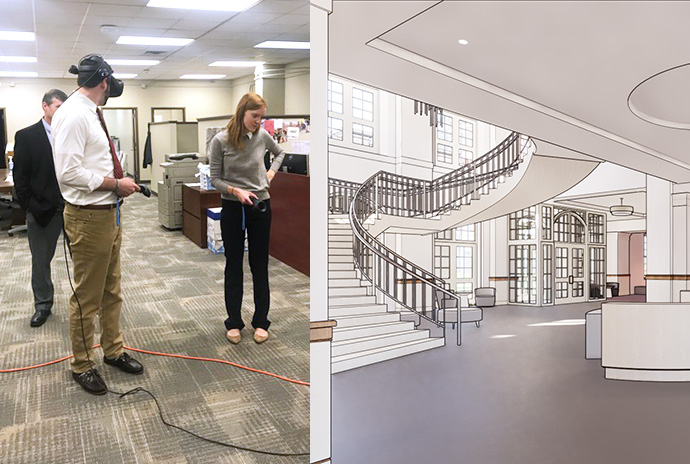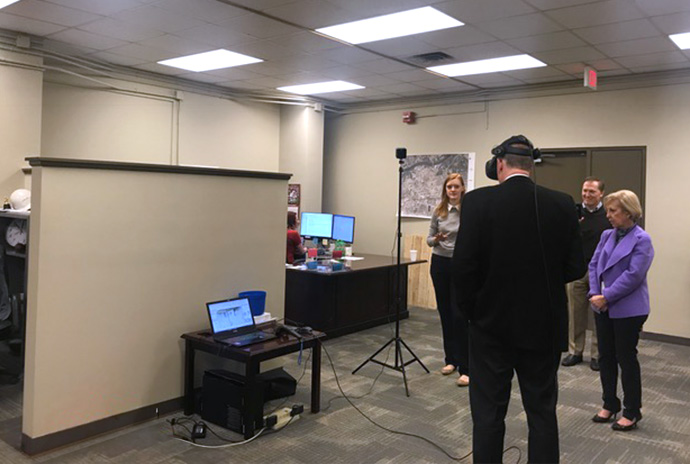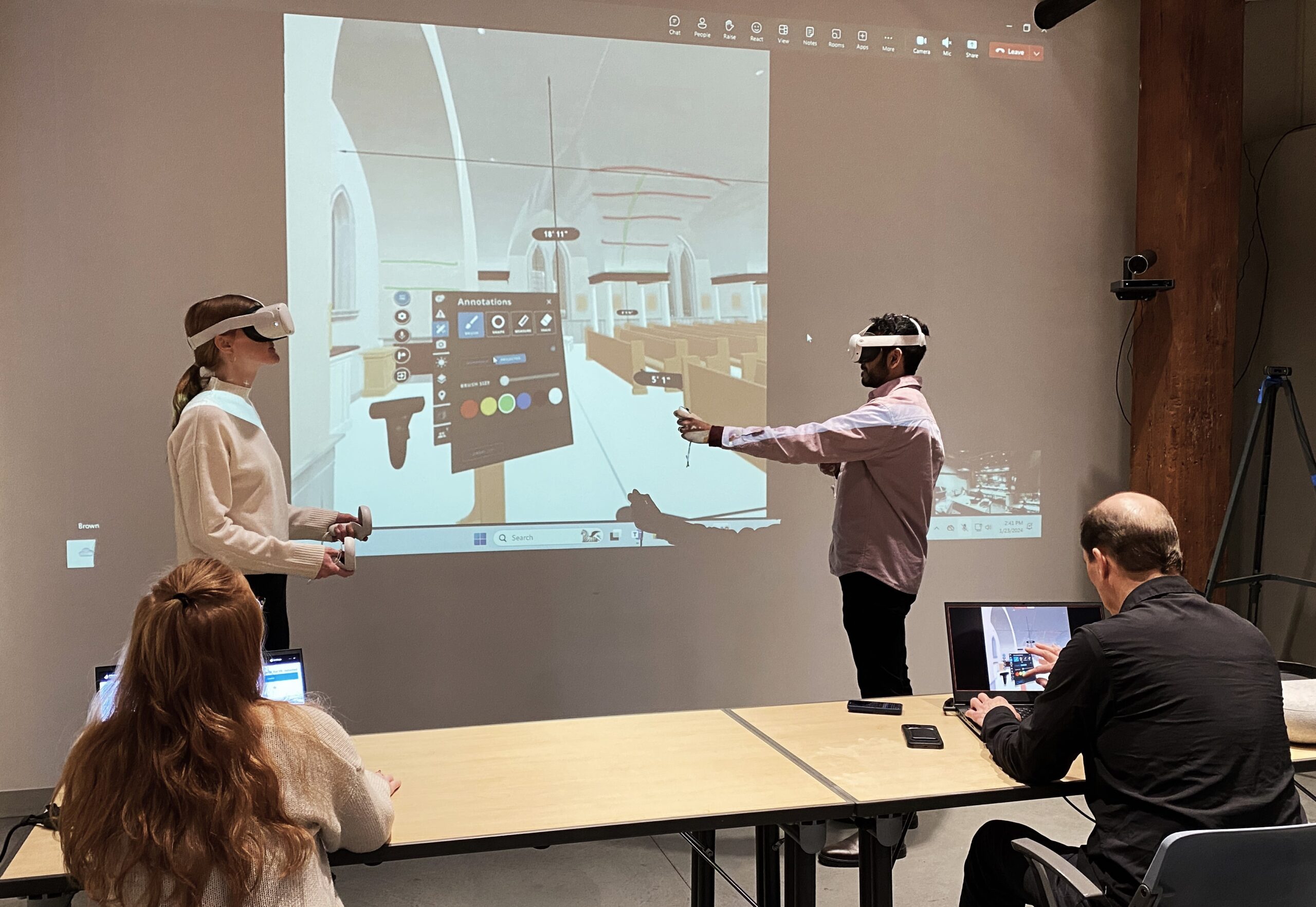At Mackey Mitchell, we seek and embrace tools that elevate creativity and streamline communication in order to better serve our clients. Now, thanks to the transformative advancements in AI (Artificial Intelligence), XR (Extended Reality), and various cutting-edge tools, we are part of the moment that is redefining the industry. While many have embraced these technologies, the key lies in leveraging them effectively to supercharge how we work and connect with clients.
The Virtual Realm
Our adventure into the virtual realm began years ago with the integration of VR into our design process. Initially, it served as a groundbreaking means to present 3D models in an immersive way, transcending traditional static renderings. Tutwiler Residence Hall, at The University of Alabama, was one of the first projects where we utilized VR, allowing us to step into our projects, feel the scale of spaces, and present virtual walkthroughs to clients. This adoption of VR fostered excitement and increased momentum for project approvals.


Fast forward to last year when we took collaboration to a new level beyond just showing clients spaces. By embracing Meta Quest headsets and Prospect, we ushered in a new era of immersive VR experiences. Prospect transforms the design review process, offering clients real-time engagement beyond mere visualization. The ability to create markups directly on 3D surfaces, sketch freeform ideas, and measure distances adds a layer of interactivity. These markups, now seamlessly integrated into meeting notes, provide clarity and consensus during key decision-making sessions.

“On-Site” Virtual Meetings
Prospect’s multi-player function allows us to host virtual meetings within the model, surpassing geographical boundaries. This enables teams from different MMA offices to be present in the same virtual reality space simultaneously. With a simple join code, participants, whether equipped with VR headsets or on desktops/laptops, converge in the same 3D model space. This inclusivity ensures that the technology doesn’t limit participation, making virtual meetings a versatile collaboration tool.
Internal Design Dynamics
Internally, VR has become our “blueprint” for exploring design options across scales. Whether looking into casework details, studying building elevations, or surveying entire campuses, the software’s fluidity enhances decision-making. The ability to switch seamlessly between design options and layers facilitates a comprehensive understanding during design reviews.

Consultant Coordination
Beyond client and internal communication, we utilize VR to explore ideas and coordinate our projects with consultants. Our exploration into virtual mockups, exemplified by a detailed bedroom unit for a university client, has the ability to showcase the potential of Enscape-VR. By refining details such as outlet locations, diffusers, and final finishes, we crafted an immersive walkthrough experience during the design development phase that offers insights earlier than conventional site-built mock-up units.
We created a mockup of a student bedroom in Sketchup that included the finalized finishes, hardware, lighting fixtures, and other components, to help a university client choose among different furniture vendors and options. Each furniture vendor was asked to submit their furniture models and layout which were then loaded into the Sketchup file and placed on different layers. This enabled an anonymous furniture selection process, which was important because it allowed the client to make unbiased furniture decisions while moving forward with the vendor. We then used Enscape-VR to render the scene in real-time and experience it in virtual reality, showing furniture, lighting, and material options in the exact same bedroom. This VR experience combined with renderings presented by each furniture vendor, has the ability to provide clients with realistic visuals to make more informed decisions and move ahead in the selection process.
The Future of Architectural Interaction
In this rapidly evolving technological landscape, we understand the need for nimble and adaptable processes to bolster our capabilities to better serve the needs of our clients. Consistency in communication, regardless of the tools we employ, remains our guiding light.
Excellence in architectural design is no longer accomplished with just static models or drawings of years past, but now through immersive spaces we can all explore together. With VR as our partner, we’re crafting experiences that push the boundaries of creativity and collaboration. Join us as we step into this virtual frontier, and let’s redefine what’s possible.

 By: Onkar Joshi
By: Onkar Joshi